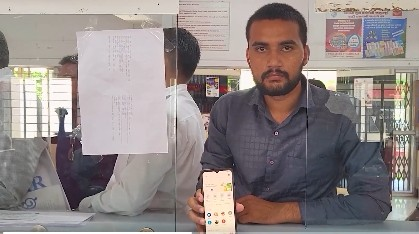Empowering rural communities: The impact of e-Gram Vishwagram
By IANS | Updated: October 4, 2025 20:30 IST2025-10-04T20:28:45+5:302025-10-04T20:30:13+5:30
Ahmedabad, Oct 4 When Narendra Modi was the Chief Minister of Gujarat, he introduced a development model that ...

Empowering rural communities: The impact of e-Gram Vishwagram
Ahmedabad, Oct 4 When Narendra Modi was the Chief Minister of Gujarat, he introduced a development model that would later transform the entire nation.
At the heart of this transformation lies the 'Digital India' campaign, inspired by the vision behind the e-Gram Vishwagram project initiated during his tenure as Gujarat's Chief Minister.
On January 23, 2009, he launched the e-Gram Vishwagram scheme, connecting more than 13,000 village panchayats in Gujarat through broadband connectivity.
This initiative played a pivotal role in changing the landscape of rural Gujarat, making government services more accessible to villagers through digital means.
Prakash Thakor, Sarpanch of Vadtal Gram Panchayat in Kheda, said that the e-Gram Vishwagram scheme brought revolutionary changes in accessing digital services for rural communities.
The scheme empowered Gujarat's village panchayats, allowing residents to benefit from various government schemes and services with just a click.
Nilesh Patel, Taluka Development Officer in Nadiad, said that 321 types of KYC documents such as death and life certificates are now provided digitally, simplifying access for citizens.
After assuming the responsibility of leading the country, Prime Minister Modi expanded this vision to a national level.
On July 1, 2015, he launched the Digital India Mission, aiming to digitally empower India and connect even the most remote and impoverished areas with digital facilities.
Prime Minister Modi emphasised the mission's goal: to enable every citizen, regardless of location, to access digital resources and government services efficiently.
As a result of the 'Digital India' campaign, the number of internet users in India has surpassed 1 billion over the last decade.
Among them, more than 420 million are from rural areas.
Mobile phone users have also crossed 1.17 billion.
Moreover, there are more than 581,000 Common Service Centres (CSCs) across the country, with over 452,000 located in rural regions.
From banking services and online financial transactions to the direct benefit transfer (DBT) of government funds to beneficiaries, these advances have been made possible through the 'Digital India' initiative.
Today, the campaign is not only empowering the citizens but also strengthening India's digital economy.
Disclaimer: This post has been auto-published from an agency feed without any modifications to the text and has not been reviewed by an editor
Open in app